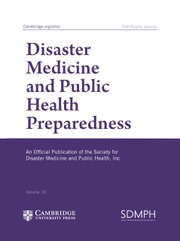No CrossRef data available.
Article contents
Investigation of the Effect of Death Anxiety on the Life Satisfaction of Individuals Living in the Earthquake Zone in Türkiye: The Disaster of the Century
Published online by Cambridge University Press: 10 April 2025
Abstract
This study aims to determine the effect of death anxiety on the life satisfaction of individuals living in 11 provinces declared as earthquake zones in Turkey.
This cross-sectional and correlational study was conducted with 435 participants in earthquake zones in Turkey. Data were collected online through Google Forms using a sociodemographic form, the Revised Death Anxiety Scale (RDAS), and the Satisfaction with Life Scale (SWLS).
In this study, it was determined that 48.5% of the participants exhibited moderate levels of death anxiety. The participants’ average score on the RDAS was 53.97 (SD = 16.21), and their mean score on the SWLS was 12.30 (SD = 4.33).
This study showed that death anxiety adversely affects life satisfaction. Higher death anxiety among participants was associated with lower satisfaction with life. Consequently, health care professionals should offer increased psychological and communication support to individuals who have experienced significant disasters like earthquakes.
- Type
- Original Research
- Information
- Copyright
- © The Author(s), 2025. Published by Cambridge University Press on behalf of Society for Disaster Medicine and Public Health, Inc


